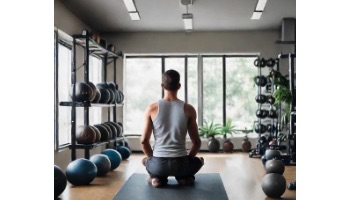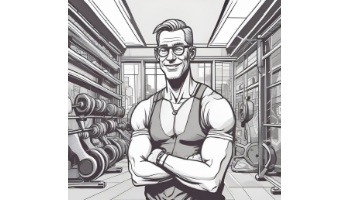 A lot of weight training that happens in the gym involves machines and plenty of isolation exercises such as chest press, shoulder raises, bicep curls, pull downs, tricep extensions, etc. Many a lifter though is surprised to find that after months or years of this kind of training, they are still comparatively weak in full body movements like squats or deadlifts. Even just trying to go through the motion with the bar, or with no weight at all, can be enough to make them sweat. Why is this so? It’s because strengthening individual muscles is only part of what it takes to strengthen the body.
A lot of weight training that happens in the gym involves machines and plenty of isolation exercises such as chest press, shoulder raises, bicep curls, pull downs, tricep extensions, etc. Many a lifter though is surprised to find that after months or years of this kind of training, they are still comparatively weak in full body movements like squats or deadlifts. Even just trying to go through the motion with the bar, or with no weight at all, can be enough to make them sweat. Why is this so? It’s because strengthening individual muscles is only part of what it takes to strengthen the body.
The Body Is A System—Strengthen It Like One
Think for a moment about a lat pull down machine. There is a seat as well as a padded, adjustable brace that goes across the knees. The brace holds you in place so you aren’t lifted off the seat when you pull the bar down towards your chest. Bracing yourself this way means that the lower body is held in a fixed position by the apparatus itself. Neither your legs, hips, or lower back can move in any appreciable way. Now contrast that with a chin up. In the chin up, your legs hang free meaning that they, along with your hips and your low back, can change position. Because of the freedom of the lower body, if you want to do your chin up without your legs swinging or your lower back hyperextending—neither of which is desirable—you’ll have to stabalize from your trunk.
This, in a nutshell, is why exercises that strengthen individual muscles only go so far in adding strength to the whole body. The body is a system and systemic strength requires systemic training.
Exercises like squats and deadlifts are called “primary lifts” or “big lifts” because they have this full body, systemic characteristic. In these movements, every part of the body is free in space and involved in the lift, meaning they must all be controlled while the movement is happening. In the deadlift, for example, the lats must be used to set the upper back and prevent it from collapsing while you also brace your core and use your hips and legs to lift the weight. This is an altogether different situation than an isolation or machine exercise. It requires your muscles to integrate their strength into one unit. That won’t just happen by itself, it requires some training of its own.
Isolation Work Can Help, It Just Doesn’t Stand Alone
None of this is to say that more isolated movements are never good. They do strengthen the muscles they target. They can also help you correct certain dysfunctions in a more focused way. However, it does mean that if this is all you do, you are missing out on a big part of usable strength. Most of the movements you do in everyday life are full body ones. Walking, running, carrying groceries, dodging other pedestrains—all of this requires the whole body to function in a coordinated and efficient manner. If you want to be better and more resilient in these situations, you want to train your body to have this kind of strength. You’ll also find that working on the big lifts can be very challenging, even if you consider yourself to be pretty fit. Again, this goes back to the very different nature of training a squat or a deadlift versus a machine or isolation exercise.
Interested in exploring it? Start by viewing a couple of these videos:


